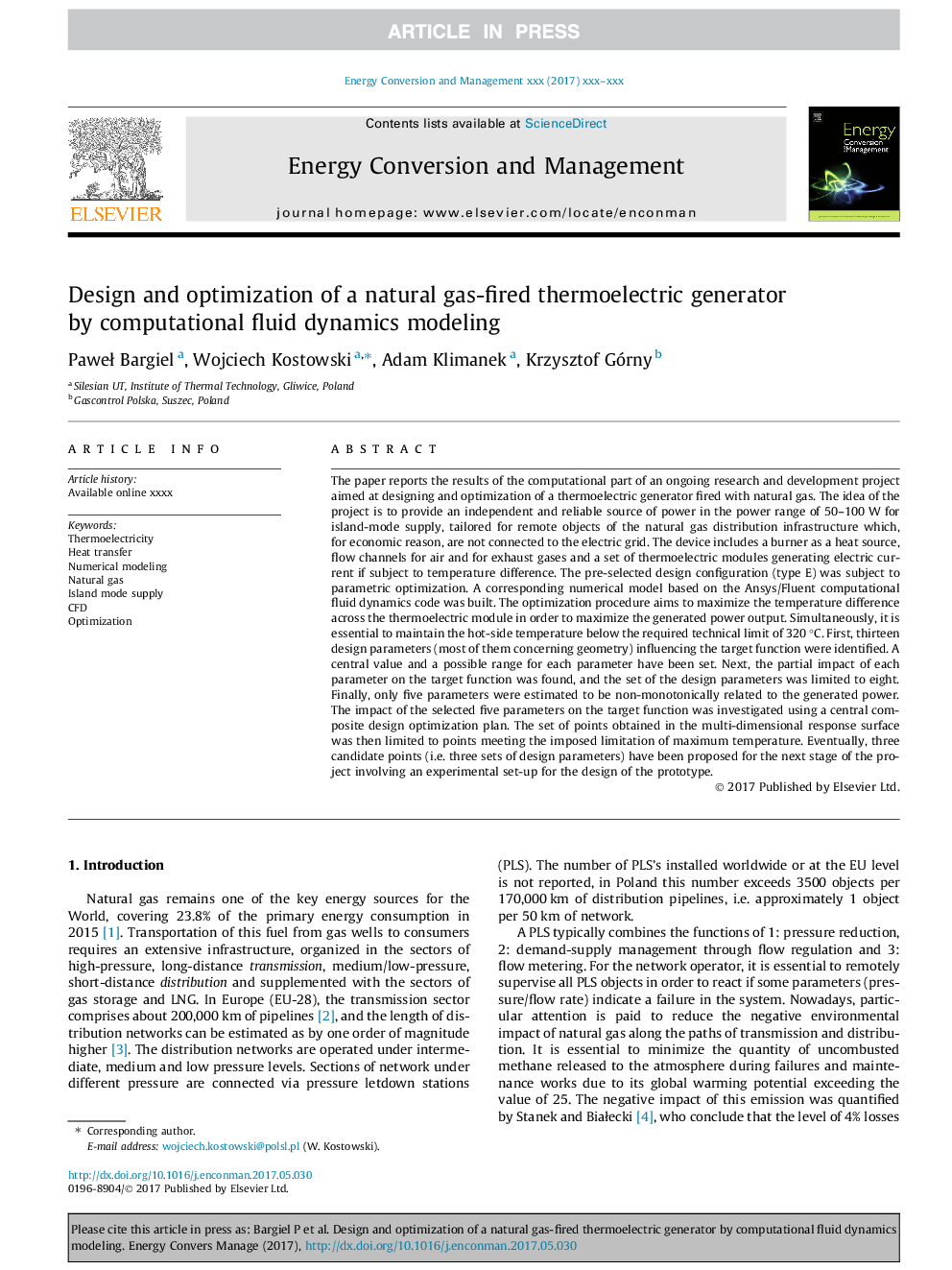| کد مقاله | کد نشریه | سال انتشار | مقاله انگلیسی | نسخه تمام متن |
|---|---|---|---|---|
| 5012483 | 1462813 | 2017 | 11 صفحه PDF | دانلود رایگان |
عنوان انگلیسی مقاله ISI
Design and optimization of a natural gas-fired thermoelectric generator by computational fluid dynamics modeling
ترجمه فارسی عنوان
طراحی و بهینه سازی ژنراتور ترموالکتریک گاز طبیعی با استفاده از مدل سازی دینامیکی سیالات محاسباتی
دانلود مقاله + سفارش ترجمه
دانلود مقاله ISI انگلیسی
رایگان برای ایرانیان
کلمات کلیدی
موضوعات مرتبط
مهندسی و علوم پایه
مهندسی انرژی
انرژی (عمومی)
چکیده انگلیسی
The paper reports the results of the computational part of an ongoing research and development project aimed at designing and optimization of a thermoelectric generator fired with natural gas. The idea of the project is to provide an independent and reliable source of power in the power range of 50-100 W for island-mode supply, tailored for remote objects of the natural gas distribution infrastructure which, for economic reason, are not connected to the electric grid. The device includes a burner as a heat source, flow channels for air and for exhaust gases and a set of thermoelectric modules generating electric current if subject to temperature difference. The pre-selected design configuration (type E) was subject to parametric optimization. A corresponding numerical model based on the Ansys/Fluent computational fluid dynamics code was built. The optimization procedure aims to maximize the temperature difference across the thermoelectric module in order to maximize the generated power output. Simultaneously, it is essential to maintain the hot-side temperature below the required technical limit of 320 °C. First, thirteen design parameters (most of them concerning geometry) influencing the target function were identified. A central value and a possible range for each parameter have been set. Next, the partial impact of each parameter on the target function was found, and the set of the design parameters was limited to eight. Finally, only five parameters were estimated to be non-monotonically related to the generated power. The impact of the selected five parameters on the target function was investigated using a central composite design optimization plan. The set of points obtained in the multi-dimensional response surface was then limited to points meeting the imposed limitation of maximum temperature. Eventually, three candidate points (i.e. three sets of design parameters) have been proposed for the next stage of the project involving an experimental set-up for the design of the prototype.
ناشر
Database: Elsevier - ScienceDirect (ساینس دایرکت)
Journal: Energy Conversion and Management - Volume 149, 1 October 2017, Pages 1037-1047
Journal: Energy Conversion and Management - Volume 149, 1 October 2017, Pages 1037-1047
نویسندگان
PaweÅ Bargiel, Wojciech Kostowski, Adam Klimanek, Krzysztof Górny,
